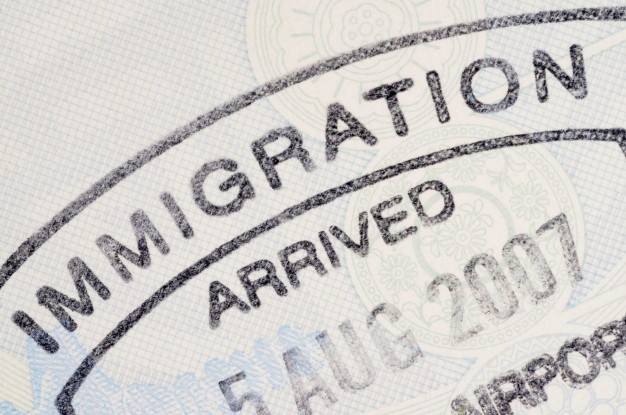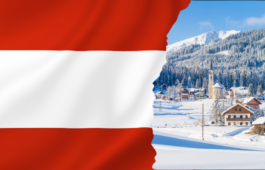- 20 April 2017
- The Migration Bureau
- No Comments

Temporary migration between Europe and Asia is on the rise
 Due to work, study and personal reasons, temporary migration between Europe and Asia is growing, and increasingly mobility is happening in both directions.
Due to work, study and personal reasons, temporary migration between Europe and Asia is growing, and increasingly mobility is happening in both directions.
The EURA-NET project brings together researchers from twelve countries to investigate the new forms of cross-border mobility between Europe and Asia. This mobility is being investigated in Belgium, China, Finland, Germany, Greece, Hungary, India, the Netherlands, the Philippines, Thailand, Turkey and Ukraine.
The three-year project, coordinated by the School of Education at the University of Tampere and funded by the EU’s Seventh Framework Programme, saw its first report published in September. The report, Transnational migration in transition: State of the art report on temporary migration, was edited by Pirkko Pitkänen and Sergio Carrera. It explores existing research on temporary mobility and investigates the administrative procedures and regulations that concern immigrants and visitors to the above-mentioned European and Asian countries. The report also looks at the policies and regulations in place at European and Asian level.
The report finds that while much research on migration has been conducted in recent decades, temporary cross-border mobility has been researched very little. Thailand, China, India and the Philippines are usually considered as countries of emigration and the European countries as countries of immigration. However, increased temporary mobility is changing these patterns. For example, Thailand and China have become destinations for immigrants, many of whom originate from Europe.
The EURA-NET report highlights how the growing internationality of labour markets and higher education have increased temporary mobility. Mobility often occurs in both directions, as demonstrated by the example of Chinese and German students: increasing numbers of students in Germany decide to go to China to study, while Chinese students are by far the biggest group of international students in Germany.
Finland is one of the European countries that wants to increase its appeal to students and highly‑educated international workers. However, efforts to increase migration have thus far been rather unsuccessful. Finland’s remote location, high taxation and difficult language are not the only explanations. Finnish regulations and practices, which do not sufficiently reflect the new forms of international mobility, may also be to blame. If Finland fails to meet the demands posed by the schooling of migrant children and finding job opportunities for the spouses of immigrants, international professionals and their families will have no trouble finding jobs elsewhere in the world.
Like China, India is a country from which highly educated professionals and students increasingly move to European countries. According to some estimates, about half a million irregular migrants move to the European countries from India, with most of them going to the United Kingdom, although Germany, France and Italy are also popular destinations.
The number of lifestyle migrants from Europe to India and from India to Europe – and in particular to the United Kingdom – has also been on the rise. European lifestyle migrants, such as pensioners, spend more and more time in Thailand, while Thai berry pickers come to Finland and the other Scandinavian countries to work in the autumn. Another important group of seasonal workers in Europe are Hungarian farm workers.
From the point of view of the countries that experience large-scale emigration, money transfers back ‘home’ continue to be important. Asians who have moved to Europe temporarily or permanently are important financiers of not only their families; their remittances are significant for the local economies of their countries of origin. This explains why some Asian countries, such as the Philippines and India, support their citizens who work abroad and facilitate their career prospects.
Filipinos work in over 200 countries. Most of them send money back home and almost all return to the Philippines at some point of their lives. The EURA-NET researchers who have looked at the practices of immigration and emigration in the Philippines say that the re-integration of the returning workers is a critical issue in the country’s migration policies. The researchers conclude that the Filipino administration should better accommodate the returning workers both socially and in the labour market, and plan how their expertise could benefit regional development.
According to the EURA-NET report, all countries experiencing immigration have problems integrating temporary migrants. These migrants and their families are more likely to experience discrimination, and their legal protection and social benefits are often restricted based on their temporary status.
Many Asian immigrants stop temporarily in Greece and Turkey on their way to Europe. The numbers of irregular migrants have grown in Greece and their position has deteriorated because of the recent economic crisis and general instability. Irregular migrants have also been growing in number in Turkey, where blatant human trafficking cases related to illegal immigration have been reported.
According to the Migration Report 2013, published by the International Organization for Migration, the world’s second most important route for migration after the Mexico-US corridor is Ukraine, and migration to Ukraine often happens through Russia. Together with Russia, India and Germany, Ukraine is also one of the countries that sends out and receives the most immigrants in the world. Migration is a much debated topic in Ukraine, but due to the current political instability, the country’s policies on immigration and transmigration are not very well organised.
Hungary, as one of the Schengen countries, has become a transit country in recent years for both migrants who wish to come to Europe and for Asian companies. The EU has guaranteed the free movement of citizens in the Schengen area, but at the same time member states have increased restrictions in their own regulations and reduced legal protection for transient migrants.
Attitudes to transient mobility differ at EU- and member state-level, and also among individual member states. The report’s authors state that joint practices would promote research and the debate on transient cross-border mobility.
Another issue is the problem of definition: what is understood by ‘temporary migrant’? According to the definition of the European Migration Network, migration is temporary when a person lives in another country for 3–12 months. However, according to EU standards, migration is temporary when it lasts for less than five years.
The report’s authors conclude that the duration of the stay is not in itself sufficient to define the difference between temporary and permanent immigration. Instead, defining aspects must be sought on a case‑by‑case basis from different categories of temporary immigration.
The research report, Transnational migration in transition: State of the art report on temporary migration.Collected Working Papers from the EURA-NET project, edited by Pirkko Pitkänen and Sergio Carrera, is available at http://www.uta.fi/edu/en/research/projects/eura-net/publications.html










